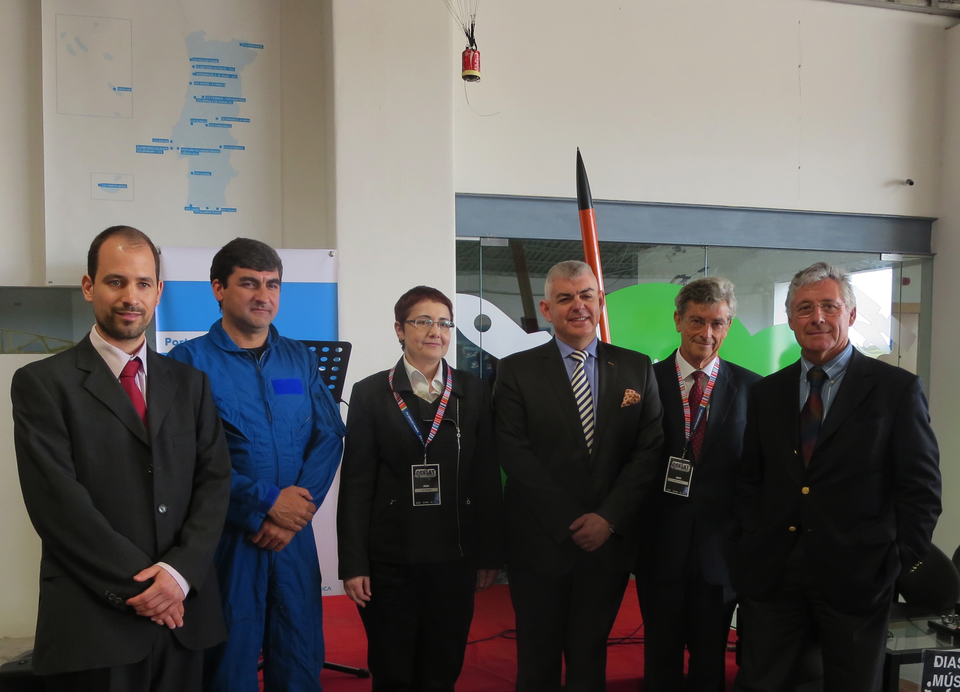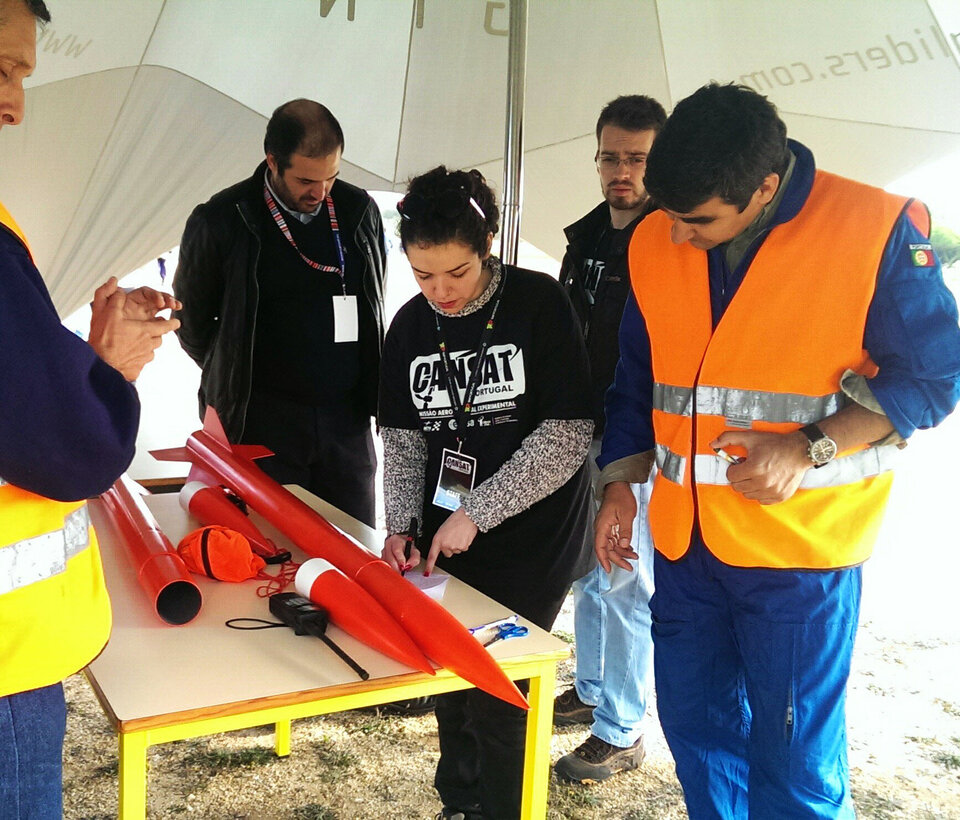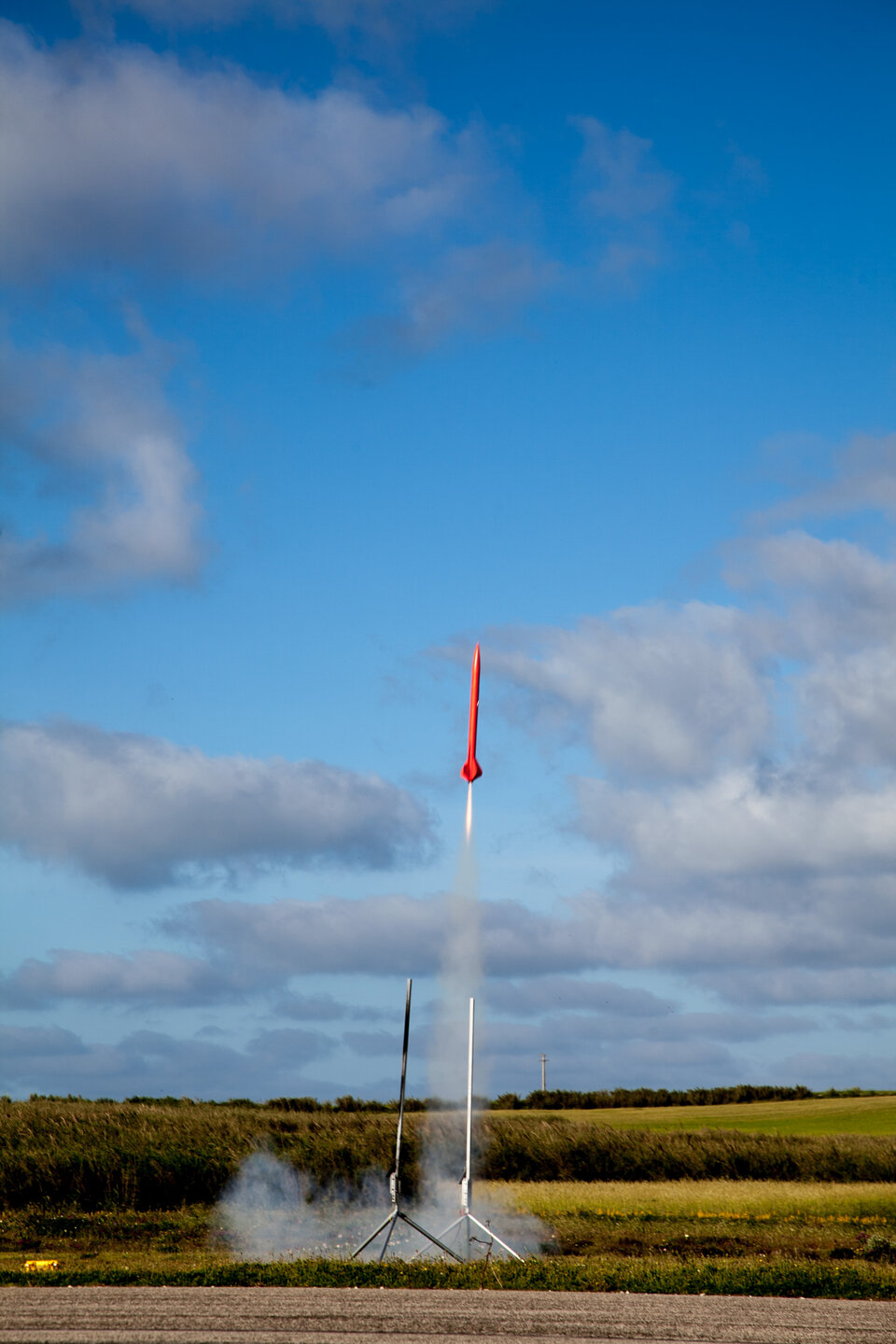Lift Off for Portuguese ESERO and Cansat competition
Portugal has become the latest ESA Member State to introduce a European Space Education Resource Office (ESERO). The launch ceremony coincided with the country’s first national competition to fly can-sized educational CanSats.
The ESERO Portugal, jointly funded by ESA and Ciência Viva, is based in the Knowledge Pavilion, a modern interactive science centre in Lisbon.
Like the ESEROs in other countries, the Portuguese office will use the fascination of space activities to attract young people to science, technology, engineering and mathematics (STEM).
ESERO Portugal will be the first point of contact for members of the Portuguese education community who are seeking information about using space as a context to support STEM teaching and learning. School teachers will be able to access a wealth of information, including classroom materials, as well as attending training workshops and related educational conferences.

By providing staff with new ideas, inspiration and knowledge about space and its relevance to the teaching of STEM subjects, ESERO Portugal will also promote awareness of space-related careers. This, in turn, will raise the profile of ESA’s education programme, the Portuguese institutions working with ESA, national space activities and the European space sector in general and the Air Force Academy.
The ceremony was attended by Hugo Marée, Head of the ESA Education and Knowledge Management Office, as well as Luís Serina, Head of FCT Space Office and other representatives of Portuguese educational and research institutes, ESA Education Office and Portuguese aerospace industries.
“The ESERO is a project that aims to respond to the specific needs of each country,” said Hugo Marée. “We believe the best way to achieve this is joining forces with the national educational institutions in order to reach students from the early stages of their educational journey in a manner tailored to the different national curricula.

“We are confident that bringing space into the classrooms helps to sustain the future of our own knowledge-based society. ESA is deeply committed to inspiring younger generations and contributing toward developing the scientific and technical workforce of tomorrow.”
Luís Serina, emphasised that “Space is playing an increasing role in our lives and that we must continue our efforts to take the full benefits of it” He added that “ESERO Portugal is another important joint initiative between Portugal and ESA, which will shape our future generations of scientists, engineers and entrepreneurs.”
Ana Noronha, Director of Ciência Viva, added that “Space has always been in the Ciência Viva agenda. Now with the ESERO Portugal we will be able to develop new educational programs and projects to bring Space into the classroom.”
The new ESERO was officially launched during the first national CanSat competition to be held in Portugal, at the Santa Cruz Beach Airfield near Torres Vedras (about 60 km north of Lisbon) on 26 April 2014.

The Portuguese CanSat competition
The CanSat competition, supported by ESERO Portugal, was organised by the AeroEspaço Centre from Torres Vedras Aeroclub.
16 teams took part in the contest, in a total of 100 students, from 10 Portuguese schools and a Spanish school, which was held on the most westerly aerodrome in continental Europe, the Santa Cruz Beach Airfield, an historic location only a few metres from the sea.
On 26 April, each team was presented to the assembled guests and members of the public. After completion of the CanSat flight readiness checks, the competition entrants were able to relax over dinner and enjoy a presentation about “The sky we see” and musical entertainment.
The rocket launches carrying the small payloads took place on the early morning of 27 April (later being replaced by airplane launches due to time restrictions). The jury selected the team from Mission Impossible from Externato de Penafirme from Torres Vedras as the overall winner.
The winning team will participate in ESA’s European Cansat Competition 2014, which will take place in the first week of June in Andoya, Norway.
There was a special award to the teams Mission Impossible and Viriathus of Escola Secundária António Damásio (Lisbon). These teams will have the opportunity to develop a Sea CanSat to be dropped over oil spils, in collaboration with the Portuguese Air Force Academy and AeroEspaço Centre, in September 2014, using unmanned aerial vehicles.

Background
The Portuguese ESERO is the latest addition to a network of other ESA Member States: the others are Belgium, Denmark, Ireland, Finland, Netherlands, Norway, Poland, Romania, Sweden and the UK.
Along with European governments, scientific and industrial partners, ESA recognises the importance of supporting science and technology education to help secure and strengthen tomorrow's workforce in STEM professional fields.
CanSats are simulated satellites, about the size of a soft drink can, which are assembled from ready-made kits or components and launched to an altitude of about one kilometre on board a small rocket. They are designed to separate from their rocket, conduct a short scientific experiment and then parachute to the ground for recovery by the student teams.
A CanSat competition offers the opportunity to high-school students to have a first experience of a real space mission starting with design, through integration, testing, launching, data analysis and presentation of results. It is also a good platform for developing skills, both general (e.g. scientific enquiry, technical design, data analysis and presentation, teamwork) and practical (e.g. soldering, building electronics, software programming, testing).





